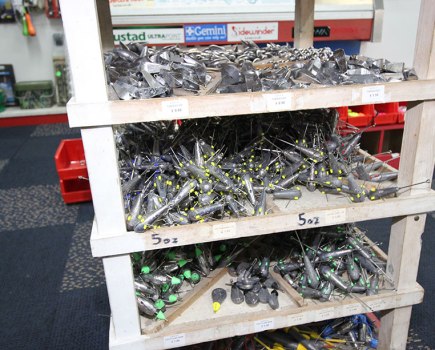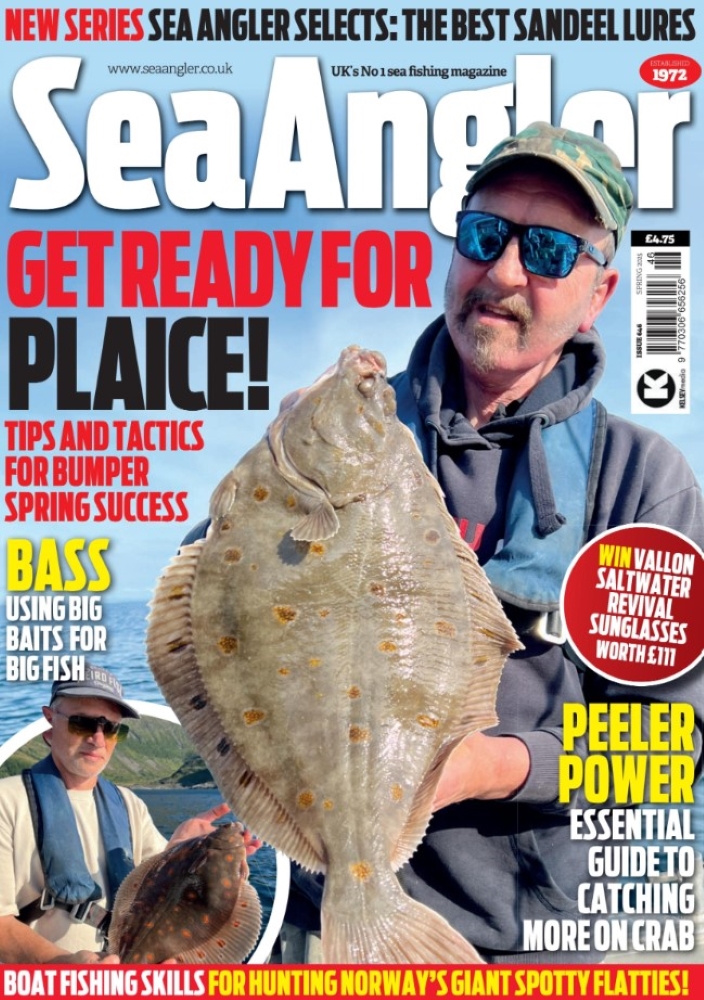You have all seen them. They stand on the pier or sea wall and cast for the horizon. Daft really, says Alan Yates, when the fish are feeding close to the wall. Here’s how to do it
THERE’S A BIG secret to fishing successfully down the wall of a pier, jetty or rock face and I am giving it away here for free.
Think about casting from the beach. Nearly all anglers cast to the maximum, but we all know that fish can be found at distances ranging from a few yards to a couple of hundred yards.
So why do 99 per cent of all off-the-wall anglers cast to maximum range when the fish are at their feet? There is nothing I enjoy more than plopping a bait alongside a wall.
Piers are an attraction to fish as well as a natural barrier, a feature they swim along, up and around. Piers funnel fish, especially in summer when various species make the most of the food and habitat.
Piers are full of features and, just like the sea bed, offer fish numerous holding and hiding places. The wall has corners, holes, ridges, overhangs, weed fringes, obstructions and floodlights. Piers may differ and all species may not be common in all regions, but wherever you fish from a pier the wall is worth targeting.
There is always a hot spot, such as a corner where the tide congregates rubbish, inside the end where the tide slacks in an eddy, the slack behind a jutting wall or pile, underneath the café or where tide meets pier.
Knowledge of the species gives the angler an insight into the pecking order up the pier wall. Each species exploits a particular food source or part of the wall and, if you fish pier walls long enough, you’ll soon realise the different depths that various species can be caught at and how these fluctuate within the tide, season, daylight and darkness.
It’s uncanny how some species feed in depth ranges that are so precise and how knowledge of these facts can be used the exploit each type of fish.
The tackle
I prefer long soft rods for down-the-wall fishing, although heavier tackle is needed for bass and conger eels. A compromise rod may be required in strong tide and you can use a beachcaster, although it does tend to dampen the fun of fishing for smaller species.
The latest long continental quiver-tip rods are ideal, while a heavy freshwater feeder rod is the choice of some. For pollack, scad and garfish you can use braid line, which gives a more direct connection to the fish and bites, as well as combating strong tide, but this does require a soft rod.
Another essential is some form of wall or railing that can act as a rod-rest, so tackle can be suspended alongside the wall. Most anglers construct a rod-rest and there are a number of ways to do this, including a bungee elastic hooked to your reel and tackle box. You could use of the new Rail Monkey to protect your rods when it is propped against a railing. Remember to release your reel drag to avoid the rod being pulled in.

Many pier walls can be snaggy because of the seaweed growth sprouting from the wall. Long rods and a wall rod-rest help keep the tackle clear of this and allow you to fish baits under weed and ledges, rather than in it.
The rig
THERE are several rigs that are perfect for pier wall hanging. The wire boom rig is a favourite because it is practical and presents baits suspended and tangle free.
An alternative is a long mono paternoster (twoup, one-down) for timid species in strong tide. It’s a favourite of anglers who fish with long light rods from stilted piers.
Spread the booms or hook snoods over 12ft to maximise the depth covered by baits (longer rods allow longer rigs).
Light snood lines (10lb) can be used to maximise tidal movement on the baits. Mullet and garfish will avoid heavy monofilament line in clear water, others may not be fussy, but if you do go light chose a tough fluorocarbon line.
Species are found at different depths so you can bait each hook differently. For instance, bread or fish strip on the top for garfish or mullet, a head-hooked white ragworm or bunch of maddies on the middle for scad or pollack and a large ragworm on the bottom for a bass.
Hook sizes range between size 6 for garfish and mullet and size 2 for pollack. Use a tough hook at the bottom because that’s the one that can pick up a bonus big fish. Conger and bass hooks start at size 3/0.
Baits in your bucket
DOWN the wall baits include small king ragworms, harbour ragworms (maddies), white ragworms, fish strip, either garfish or mackerel, sandeels, live prawns/shrimps, bread, maggots, sweetcorn etc.
For the biggest species have peeler crabs, mackerel head, flapper or fillet or a small live pout, whiting and smelt to hand.
Head-hook a ragworm so they swim and wriggle attractively. Small strips or slivers of fish cut to resemble a sandeel work best, hook them once. Bread can catch a surprising number of the species, especially if the fishing spot is pre-baited.

Tactics
MOVEMENT is an effective trick to encourage any fish swimming close to a wall to attack the bait.
The obvious method is to raise and lower the rig occasionally. It’s a good idea to use a marked line; a coloured leader works, so that you know where you are. You can also tie on a stop knot on the line in Power Gum to mark your depth. If you get a bite you can then return to the hit zone.
Another method is to use a lighter lead that will travel and lift in the tide. Drop the rig to the bottom and allow it to lift in the tide to a depth the weight will hold. Altering the weight of the lead can allow you to search out areas of a wall or along/under pier piles.
Species like pollack, mackerel, garfish and scad will attack a moving bait and it often pays to keep the bait on the move rather than leaving it to fish statically.
Freelining a bait with a swan or SSG shot is a tactic that works well in light tide from many piers, especially for coalfish, mackerel, scad and garfish. A small strip of fish from the silver underbelly or a sandeel section is the bait.
Float fishing alongside the pier wall is a fun alternative. You will need to use a sliding float rig with a Power Gum stop knot on the line above the float so that the depth you are fishing can be adjusted easily. Remember the tide will always be moving and it will take your bait away from the feeding zone unless you regularly deepen or shallow up.
Groundbait is a worthwhile tactic. Use a mixture of boiled fish, bread, bran, sweetcorn, freshwater pellets and tinned pilchards, which can all be mashed up and introduced periodically to attract the fish. Alternatively put it in a fine mesh bread bag suspended alongside the wall.
SPECIES DEPTH GUAGE
Garfish: Surface feeders rarely found below 12ft. Bait is fish strip, garfish or mackerel.
Mackerel: Feed at various depths according to their prey. Baits include fish strip, worms and most lures.
Mullet: Thick-lips do feed on the bottom in shallow estuaries, but around piers they feed mainly on the surface or just out of sight, depending upon water clarity. Baits are bread, fish flesh without the skin, maggots, paste and sometimes harbour rag.
Pollack: Eight spool turns up from most walled piers is the daylight target area, but at night they take baits on the top. Baits are a head-hooked ragworm, bunches of wriggly harbour or white rag.
Coalfish: Feed at all depths, but often found within 12ft of the surface. Bait is peeler crabs, ragworms and fish strip. Use beads on rigs.
Scad: Feed just off the bottom in daylight, but on the surface in darkness, especially under lights. Bait is fish strip, head-hooked king or white rag with the latter good in clear water.
Wrasse: Mostly found around the low tide weed fringe where they take up residence. Baits are peeler crabs for big wrasse and worms for small.
Bream: Mainly bottom feeders, but also follow the pier wall up and can be caught very shallow on occasions. Baits are crab, squid, fish strip.
Bass: Found mainly on the bottom, but do feed within 12ft of the surface and on the surface when chasing food, especially under pier lights at night. Baits include rag, small live fish, crabs and large mackerel baits.
Pouting: Mostly caught on the bottom, but do rise several feet on occasions. Most baits catch pouting.
Conger: A bottom predator that will come very close to the surface on occasions. Baits are large fresh mackerel flapper, head or fillet, squid or small pollack and pouting.








